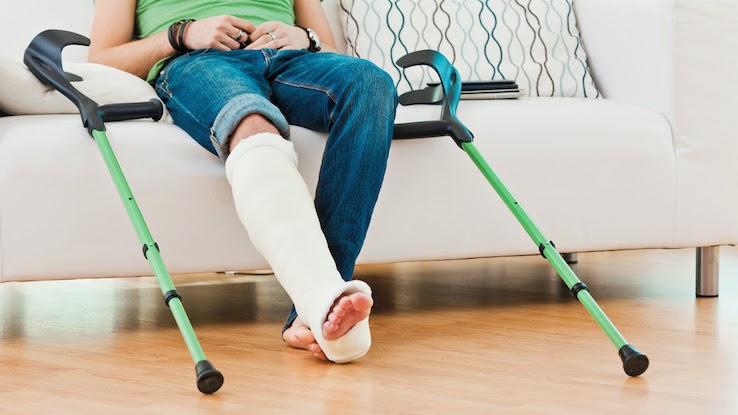
In the event of a temporary illness or injury that impedes your ability to work, short-term disability insurance ensures that you receive a portion of your income. For instance, if a mechanic injures their hand or a teacher has back surgery, they can rest assured that tending to those injuries won’t impact their livelihood.
Understanding short-term disability insurance — how much you’ll get, how long it will last, and what it covers — is essential, as is determining whether you’ll receive coverage through your employer or a private insurance company. After all, you’ll want to have your coverage in place just in case an unforeseen event or accident crops up. With this in mind, we’re delving into everything you need to know about short-term disability insurance.
Short-Term Disability Insurance Basics
Most short-term disability insurance covers around 60 percent of lost wages for those who qualify. However, depending on your specific plan, it may be more or less. While short-term disability premiums are not tax-deductible, the coverage received as income is tax-free. The only exception? If it’s provided by an employer who does not include the cost in your gross income. In that case, the benefits are taxable.

After being approved for short-term disability insurance, the benefits usually come with an elimination period of anywhere from a week to a month. The elimination period is the waiting period between when the disability began and when you begin receiving the benefits. Usually, the benefits last between three and six months, but they can provide coverage for as long as a year or two if your situation demands it.
If you’re in need of your benefits, you’ll first want to submit a claim. Typically, this means filling out a form that details the medical circumstances surrounding the short-term disability, which requires input from both you and your doctor. Once you’ve submitted a claim, the insurance company will review the information to determine whether or not you qualify based on your policy.
How Much Does Short-Term Disability Insurance Cost?
The cost of the insurance also depends on your specific situation. Ideally, your employer covers it for free or at a reduced cost. However, if not — or if you’re self-employed — you’ll have to buy your own coverage from a private company. Even then, plans vary based on your gross income, the duration of the benefits, and the elimination period.

For example, if the short-term disability policy is for 60 percent of your gross income and you make a lot of money, more money is paid out. Therefore, the insurance will cost more if your income is higher. (Plus, a monthly cap may apply.) Policies for short-term disability insurance give you an option for how long you are able to receive the benefits, and, the longer you choose, the higher your premium. Moreover, if you opt for a shorter elimination period, you’ll pay a higher premium. All of this to say, there’s a lot to consider when searching for coverage.
What’s Covered?
Unfortunately, there isn’t a single definition of “short-term disability,” which means the specifics of your policy will come into play when your insurance is determining whether or not your injury or illness is covered. However, if you have an injury or illness that limits your ability to work, you’ll likely qualify — it just requires submitting a detailed claim.
So, do different types of injuries, illnesses, or conditions impact the sort of benefits you’ll receive? For physical accidents that leave you unable to work, you’ll likely receive short-term disability benefits. For example, a car accident that leaves you with broken bones — or even a bad fall — is a common reason as to why someone would tap into short-term disability benefits. Moreover, this kind of coverage often extends to one’s recovery time if they undergo a major surgery — like back or knee replacement surgery — as well as illnesses that cause a temporary disability. Lately, many folks are looking into policies that cover COVID-19-related benefits.

Additionally, maternity leave is often covered by short-term disability insurance. On average, benefits last around six weeks post-delivery — or potentially longer for a patient who has delivered via C-section. However, if the short-term insurance policy does not cover pre-existing conditions — say, you were pregnant before signing up — then it may not cover your maternity leave.
Often, mental health isn’t taken as seriously as physical health, but, thankfully, some short-term disability insurance does cover mental health-related events. For example, if you are experiencing debilitating depression that disrupts your ability to work, documentation from a psychiatrist, and evidence that you’ve been struggling for awhile, may entitle you to benefits.
What Isn’t Covered?
Some things are not covered by short-term disability insurance. While what’s not covered can vary by plan, there are some frequent commonalities between policies. For example, many policies do not cover pre-existing conditions. Even if you didn’t disclose the condition ahead of time, if you are filing a claim for benefits, the insurance company will be diligent in looking for evidence of any condition that predated your claim. Some examples of preexisting conditions include neurological disorders, cancer, heart disease, and HIV/AIDS.
Another exception? Any injuries or illnesses that occur on the job are likely excluded from short-term disability coverage and instead fall under the purview of workers’ compensation. Moreover, in most cases, short-term disability insurance will not cover any injury that was intentionally self-inflicted or acquired as a result of so-called “criminal activities.”
How Does It Differ From Long-Term Disability Insurance?
Short-term disability insurance and long-term disability coverage differ in a few key ways.
- The types of injuries and illnesses that are covered
- The length of time the benefits last
- The duration of the elimination period
Not only do long-term disability benefits last longer, but the elimination period is usually longer as well. However, unlike short-term disability insurance, it will cover long-term mental health illnesses and disorders; injuries with long recovery times; cancer; and musculoskeletal disorders. Generally, employers don’t cover long-term disability insurance, so getting a policy on top of your short-term disability insurance can ensure that your income will be protected no matter what happens.
Short-Term Disability Insurance vs. FMLA
It is common to get short-term disability insurance confused with what is covered by the Family and Medical Leave Act (FMLA). FMLA provides protection for workers who need to take a leave of absence from work for family and/or medical reasons.

The law states that the employee must be given as much as 12 weeks of time off for health problems, having children, or taking care of sick family members. The employer can not fire you during this time. The main difference is that FMLA provides unpaid time off, whereas short-term disability replaces a percentage of income during the time off.
To receive FMLA coverage, employees need to have worked at their job for a year, clocking at least 1,250 hours. Employers with less than 50 employees are exempt. If you qualify for FMLA, a lot of employers require that you use that time and your short-term disability concurrently.





